s Multimedia
i
Fingerprinting
Forensics for
Traitor Tracing
K. J. Ray Liu, Wade Trappe, Z. Jane Wang,
Min Wu, and Hong Zhao
n
o
i
t
a
c
n
u
m
m
o
C
d
n
a
g
n
s
s
e
c
o
r
P
i
i
l
a
n
g
S
n
o
s
e
i
r
e
S
k
o
o
B
P
S
A
R
U
E
I
�
Multimedia Fingerprinting Forensics for
Traitor Tracing
�
EURASIP Book Series on Signal Processing and Communications, Volume 4
Multimedia Fingerprinting Forensics for
Traitor Tracing
K. J. Ray Liu, Wade Trappe, Z. Jane Wang, Min Wu, and Hong Zhao
Hindawi Publishing Corporation
http://www.hindawi.com
�
EURASIP Book Series on Signal Processing and Communications
Editor-in-Chief: K. J. Ray Liu
Editorial Board: Zhi Ding, Moncef Gabbouj, Peter Grant, Ferran Marqu´es, Marc Moonen,
Hideaki Sakai, Giovanni Sicuranza, Bob Stewart, and Sergios Theodoridis
Hindawi Publishing Corporation
410 Park Avenue, 15th Floor, #287 pmb, New York, NY 10022, USA
Nasr City Free Zone, Cairo 11816, Egypt
Fax: +1-866-HINDAWI (USA Toll-Free)
© 2005 Hindawi Publishing Corporation
All rights reserved. No part of the material protected by this copyright notice may be reproduced or
utilized in any form or by any means, electronic or mechanical, including photocopying, recording,
or any information storage and retrieval system, without written permission from the publisher.
ISBN 977-5945-18-6
�
Dedication
To Our Families
�
Contents
Preface
1.
Introduction
2. Preliminaries on data embedding
2.1. Content protection via digital watermarking
2.1.1. Major applications and design requirements
2.1.2. Basic embedding approaches
2.2. Robust additive spread-spectrum embedding
2.2.1. Overview of spread-spectrum embedding
2.2.2. Distortion and attacks against robust embedding
2.2.3. Mathematical formulation
2.2.4. Alternative detection statistics
2.2.5. Exploiting human visual properties
2.3. Employing spread-spectrum embedding in fingerprinting
3. Collusion attacks
3.1.
3.2.
Introduction to collusion attacks
3.1.1. Linear collusion attacks
3.1.2. Nonlinear collusion attacks
Introduction to order statistics
3.2.1. Distribution of order statistics
3.2.2.
3.2.3.
Joint distribution of two different order statistics
Joint distribution of order statistics and
the unordered random variables
3.3. Multimedia fingerprinting system model
3.4.
3.3.1. Fingerprinting systems and collusion attacks
3.3.2. Performance criteria
Statistical analysis of collusion attacks
3.4.1. Analysis of collusion attacks
3.4.2. Analysis of detection statistics
System performance analysis
3.4.3.
3.5. Collusion attacks on Gaussian-based fingerprints
3.5.1. Unbounded Gaussian fingerprints
3.5.2. Bounded Gaussian-like fingerprints
3.6. Preprocessing of the extracted fingerprints
3.7. Experiments with images
3.8. Chapter summary
xi
1
7
7
8
9
11
12
13
15
17
21
23
25
26
26
28
29
30
30
31
33
33
35
36
36
41
42
43
43
48
52
57
61
�
viii
Contents
4. Orthogonal fingerprinting and collusion resistance
4.1. Collusion resistance analysis
4.1.1. The maximum detector
4.1.2. The thresholding detector
4.2. Extensions to other performance criteria
4.3. Extensions to other types of attacks
4.4. A practical estimator for the amount of colluders
4.5. Experiments with images
4.6. Efficient fingerprint detection using tree structure
4.6.1. Tree-structured detection strategy
4.6.2. Experiments on tree-based detector
4.7. Chapter summary
5. Group-oriented fingerprinting
5.1. Motivation for group-based fingerprinting
5.2. Two-tier group-oriented fingerprinting system
5.2.1. Fingerprint design scheme
5.2.2. Detection scheme
5.2.3. Performance analysis
5.3. Tree-structure-based fingerprinting system
5.3.1. Fingerprint design scheme
5.3.2. Detection scheme
5.3.3. Parameter settings and performance analysis
5.4. Experimental results on images
5.5. Chapter summary
6. Anticollusion-coded (ACC) fingerprinting
6.1. Prior work on collusion-resistant fingerprinting for generic data
6.2. Code modulation with spread-spectrum embedding
6.3. Combinatorial designs
6.4. Combinatorial-design-based anticollusion codes
6.4.1. Formulation and construction of ACC codes
6.4.2. Examples of BIBD-based ACC
6.4.3. ACC coding efficiency and BIBD design methods
6.5. Detection strategies and performance tradeoffs
6.5.1. Hard detection
6.5.2. Adaptive sorting approach
6.5.3.
Sequential algorithm
6.6. Experimental results for ACC fingerprinting
6.6.1. ACC simulations with Gaussian signals
6.6.2. ACC experiments with images
6.7. A unified formulation on fingerprinting strategies
6.8. Chapter summary
7.
Secure fingerprint multicast for video streaming
7.1.
Secure video streaming
63
65
66
68
78
83
88
90
94
94
98
99
101
102
105
105
106
111
121
121
122
124
132
135
137
139
142
143
148
149
150
152
154
156
157
157
158
158
163
164
168
171
172
�
Contents
7.2. Prior art in secure fingerprint multicast
7.3. General fingerprint multicast distribution scheme
7.4.
Joint fingerprint design and distribution scheme
7.4.1. Comparison of fingerprint modulation schemes
7.4.2.
Joint fingerprint design and distribution
7.4.3. Addressing the computation constraints
7.5. Analysis of bandwidth efficiency
“Multicast only” scenario
7.5.1.
7.5.2. General fingerprint multicast scheme
7.5.3.
Joint fingerprint design and distribution scheme
7.6. Robustness of the embedded fingerprints
7.6.1. Digital fingerprinting system model
7.6.2. Performance criteria
7.6.3. Comparison of collusion resistance
7.7. Fingerprint drift compensation
7.8. Chapter summary
8. Fingerprinting curves
Introduction
8.1.
8.2. Basic embedding and detection
8.3.
8.2.1. Feature extraction
8.2.2. Fingerprinting in the control-point domain
8.2.3. Fidelity and robustness considerations
8.2.4. Experiments with simple curves
Iterative alignment-minimization algorithm for
robust fingerprint detection
8.3.1. Problem formulation
8.3.2.
8.3.3. Detection example and discussion
Iterative alignment-minimization algorithm
8.4. Experiments with maps
8.5. Chapter summary
Bibliography
Index
ix
173
174
176
177
180
185
186
186
187
191
194
194
195
195
199
202
205
205
208
208
210
212
215
219
221
222
225
228
237
239
251
�
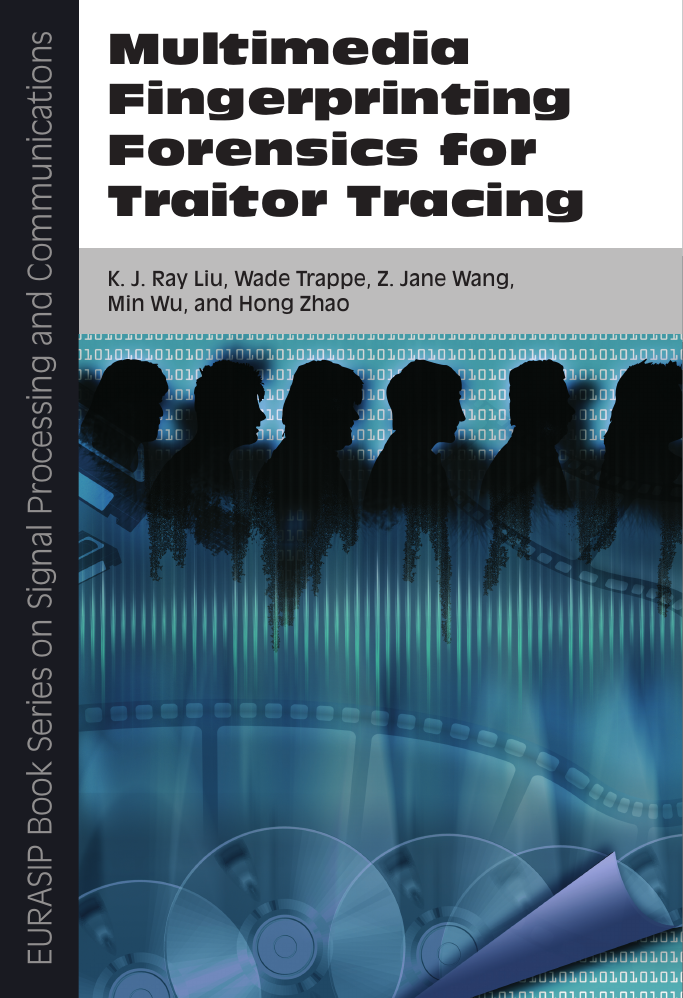
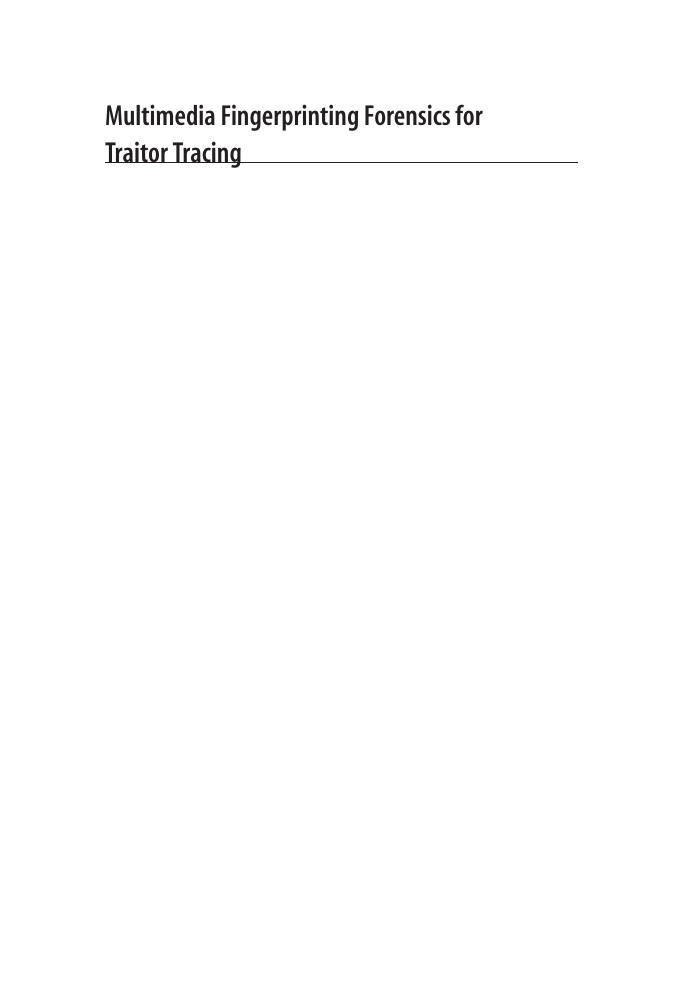
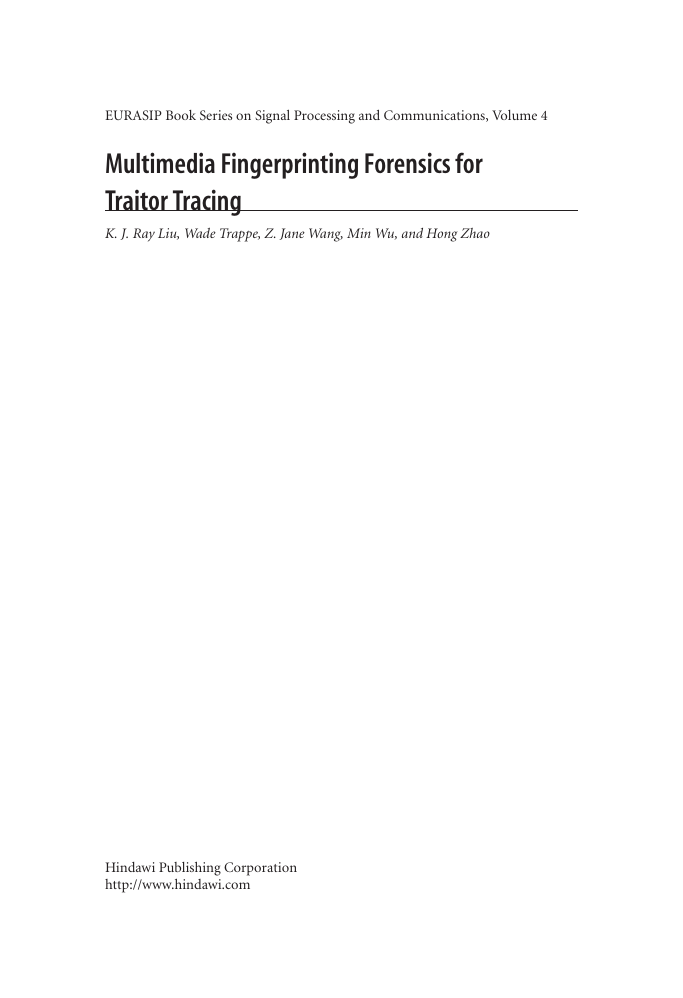
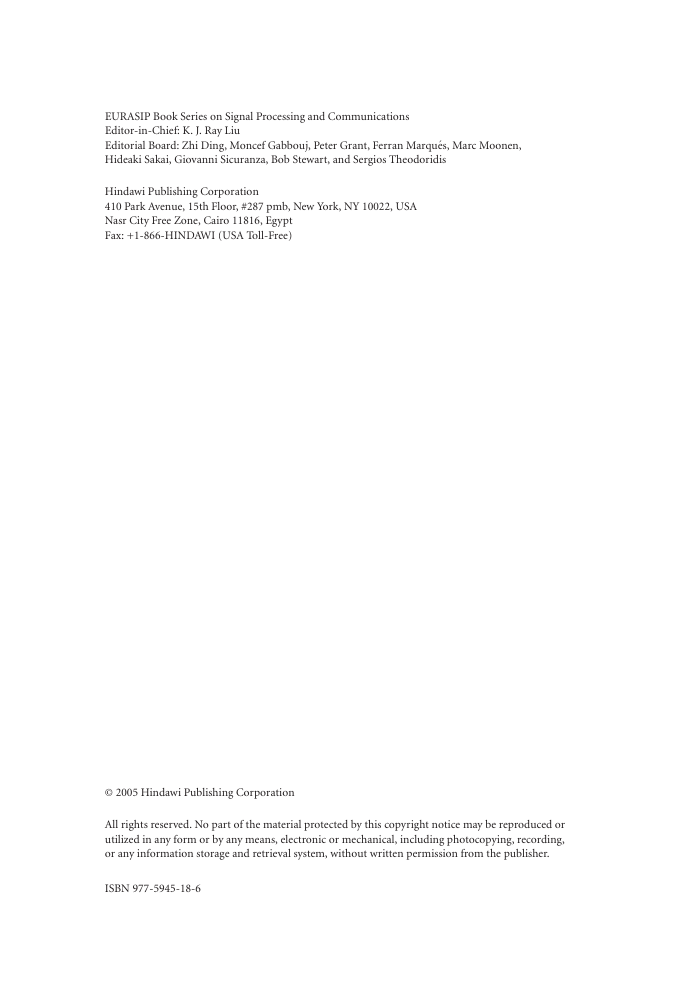


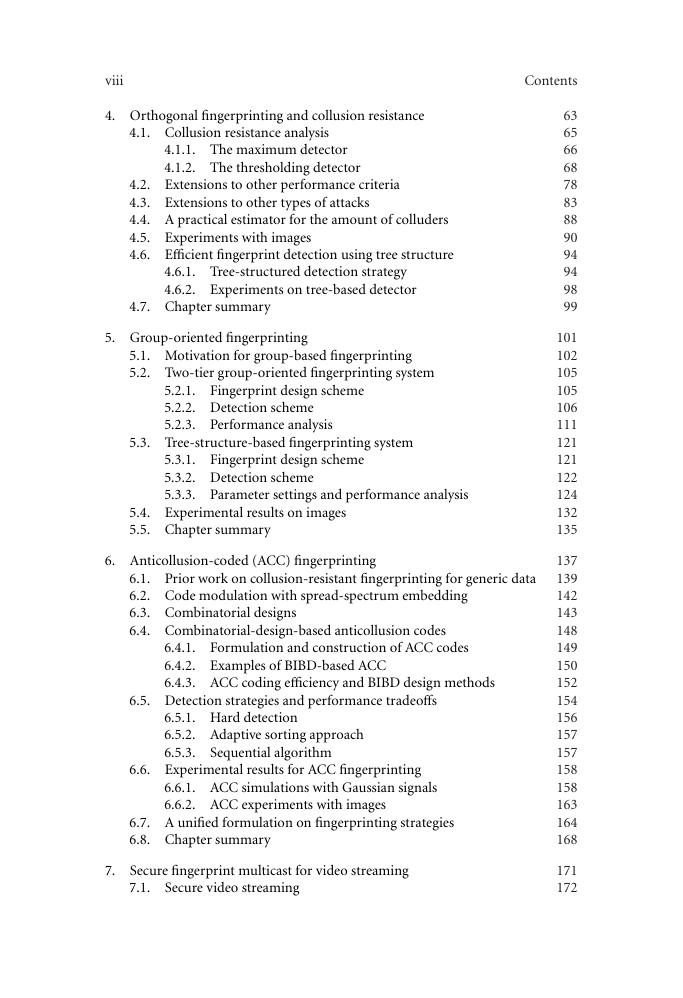









 2023年江西萍乡中考道德与法治真题及答案.doc
2023年江西萍乡中考道德与法治真题及答案.doc 2012年重庆南川中考生物真题及答案.doc
2012年重庆南川中考生物真题及答案.doc 2013年江西师范大学地理学综合及文艺理论基础考研真题.doc
2013年江西师范大学地理学综合及文艺理论基础考研真题.doc 2020年四川甘孜小升初语文真题及答案I卷.doc
2020年四川甘孜小升初语文真题及答案I卷.doc 2020年注册岩土工程师专业基础考试真题及答案.doc
2020年注册岩土工程师专业基础考试真题及答案.doc 2023-2024学年福建省厦门市九年级上学期数学月考试题及答案.doc
2023-2024学年福建省厦门市九年级上学期数学月考试题及答案.doc 2021-2022学年辽宁省沈阳市大东区九年级上学期语文期末试题及答案.doc
2021-2022学年辽宁省沈阳市大东区九年级上学期语文期末试题及答案.doc 2022-2023学年北京东城区初三第一学期物理期末试卷及答案.doc
2022-2023学年北京东城区初三第一学期物理期末试卷及答案.doc 2018上半年江西教师资格初中地理学科知识与教学能力真题及答案.doc
2018上半年江西教师资格初中地理学科知识与教学能力真题及答案.doc 2012年河北国家公务员申论考试真题及答案-省级.doc
2012年河北国家公务员申论考试真题及答案-省级.doc 2020-2021学年江苏省扬州市江都区邵樊片九年级上学期数学第一次质量检测试题及答案.doc
2020-2021学年江苏省扬州市江都区邵樊片九年级上学期数学第一次质量检测试题及答案.doc 2022下半年黑龙江教师资格证中学综合素质真题及答案.doc
2022下半年黑龙江教师资格证中学综合素质真题及答案.doc